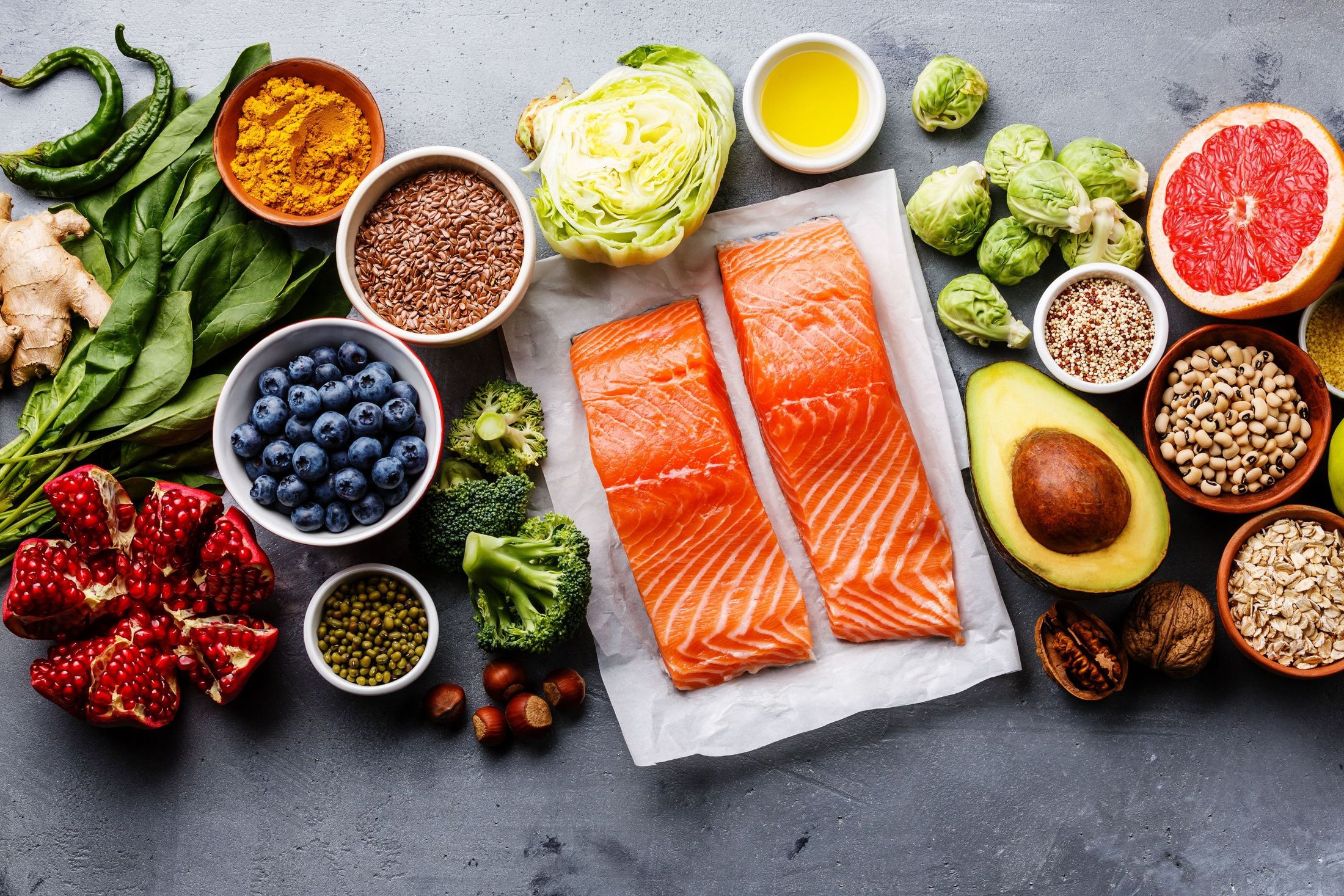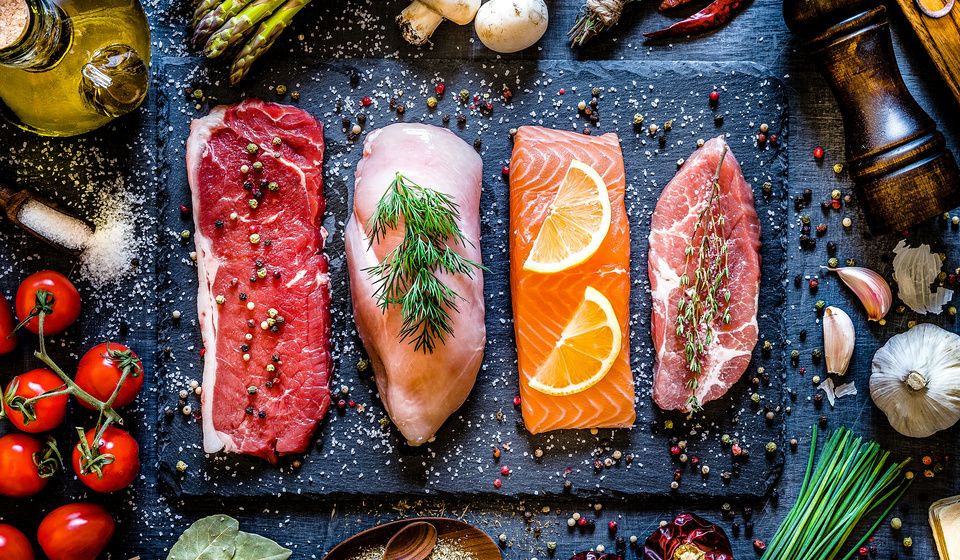The Elimination Diet: A Path to Healing and Personalized Nutrition
Ali Segersten Mar 03, 2025
Food has a profound impact on our health, influencing everything from digestion and inflammation to energy levels and mental clarity. But for many, certain foods can trigger unwanted symptoms without them even realizing it.
An Elimination Diet is a structured approach to identifying food sensitivities and intolerances by removing common trigger foods for a period of time, then systematically reintroducing them to observe how the body reacts. This process helps uncover the root causes of symptoms and allows for a more personalized, nourishing diet.
As we begin the third month of our 12 Gifts of Health Journey—Step #3: Remove Food Sensitivities—this aligns with the third foundational step in the "Remove and Replace" phase of healing: eliminating foods that trigger an immune response in your body. By taking this step, you create space for deep healing and a way of eating that truly supports your well-being.
What Is a Food Sensitivity?
A food sensitivity occurs when the immune system mistakenly identifies a harmless food as a threat, triggering an inflammatory response. Unlike immediate food allergies—which involve IgE antibodies and can result in rapid-onset symptoms like hives or anaphylaxis—food sensitivities typically involve delayed immune responses, most commonly mediated by IgG antibodies. These reactions can occur hours or even days after consuming the offending food, making them harder to identify without a structured approach like an elimination diet.
When the immune system detects a food antigen it perceives as foreign, immune cells release pro-inflammatory cytokines—chemical messengers that alert and activate other immune cells throughout the body. Some of the key cytokines involved in food sensitivity reactions include:
- Tumor necrosis factor-alpha (TNF-α): Promotes systemic inflammation and can disrupt tight junctions in the intestinal lining, contributing to increased intestinal permeability, often called “leaky gut.”
- Interleukin-6 (IL-6): Involved in both acute and chronic inflammation, IL-6 can stimulate further immune activation and is linked to fatigue, joint pain, and mood disturbances.
- Interleukin-1 beta (IL-1β): A potent inflammatory cytokine that activates immune cells and contributes to symptoms such as headaches, body aches, and digestive upset.
When these cytokines are repeatedly triggered by dietary antigens, they create a chronic low-grade inflammatory state that wears down the gut lining. This disruption compromises the barrier function of the gut lining, allowing larger, undigested food particles and bacterial byproducts like lipopolysaccharide (LPS) to slip into circulation. This not only fuels further inflammation but can also contribute to the development of autoimmune conditions, brain fog, skin issues, and widespread symptoms throughout the body.
The term “food sensitivity” literally means that your body is sensitive to a particular food—not because it is inherently bad, but because your immune system has become dysregulated. Because each person’s immune system, microbiome, and detox pathways are unique, responses to the same food can vary widely. What nourishes one person may inflame another.
Why Follow an Elimination Diet?
Food sensitivities don’t always make themselves obvious. Unlike true food allergies, which cause immediate and dramatic symptoms, sensitivities often create a quiet storm—digestive issues, fatigue, joint pain, brain fog, mood shifts, skin eruptions, or autoimmune flare-ups that seem to come and go without warning.
When your immune system is chronically activated by foods your body perceives as threats, it becomes harder to feel like yourself—mentally, emotionally, and physically.
An elimination diet provides a clear, science-backed method to pause this cycle, reduce the inflammatory burden, and allow the gut and immune system time to reset. By temporarily removing common reactive foods and then reintroducing them one at a time, you give your body the space it needs to speak clearly. In that space, you gain clarity, energy, and insight—often for the first time in years.
The goal of nourishing yourself for optimal health isn’t about restricting as many foods as possible, but rather about creating a diverse, nutrient-rich diet that supports health and longevity. However, the paradox is that true healing can be difficult when your immune system is constantly reacting to the foods you consume every day. If your body is in a state of nutrient deficiencies, your gut microbiome is out of balance, and your stress levels are chronically high, you may find yourself reacting to many foods. This is why removing trigger foods is an essential step in the healing process.
As you work to restore gut health, replete essential nutrients, and manage stress, your body becomes more resilient and food sensitivities often decrease. Over time, you may find that you react to only one or two foods—or possibly none at all. By focusing on removing trigger foods while prioritizing a nutrient-dense, whole-foods approach, you’re laying the foundation for greater food freedom and long-term well-being.

Finding the Right Elimination Diet for Your Health Journey
There are many types of Elimination Diets, each designed to help identify food sensitivities, reduce inflammation, and support healing based on individual needs. The Basic Elimination Diet removes common triggers like gluten, dairy, soy, eggs, corn, and yeast to uncover hidden intolerances. The Full Elimination Diet removes all of the common trigger foods, plus citrus, chocolate, beef, pork, tree nuts, sesame, and cane sugar. The Anti-Inflammatory Diet focuses on eliminating inflammatory and processed foods, while balancing blood sugar and emphasizing nutrient-dense, whole foods that support gut and immune health.
The Six Food Elimination Diet (SFED) is often used for eosinophilic esophagitis (EoE) and removes the top six allergens: dairy, wheat, soy, eggs, nuts, and seafood. The IFM Elimination Diet, developed by the Institute for Functional Medicine, is a structured approach that removes common inflammatory foods and supports detoxification with whole, healing foods. The Autoimmune Protocol (AIP) takes elimination a step further by removing grains, legumes, nightshades, nuts, and seeds to calm autoimmune flare-ups and promote gut healing.
The Low-FODMAP Diet is specifically designed to reduce symptoms of irritable bowel syndrome (IBS) and other digestive disorders by eliminating fermentable carbohydrates that can cause bloating, gas, and discomfort. The Low-Oxalate Diet is beneficial for those sensitive to oxalates, found in foods like spinach, almonds, and sweet potatoes, which can contribute to kidney stones and inflammation.
The Low-Histamine Diet helps manage histamine intolerance by avoiding aged, fermented, and high-histamine foods that can trigger symptoms like headaches, hives, and digestive distress. No matter your health journey, finding the right Elimination Diet can be a powerful tool for discovering what foods work best for your body and achieving optimal wellness.
Foods Commonly Eliminated and Their Associated Symptoms
An Elimination Diet removes foods that are known to cause sensitivities, intolerances, or inflammatory reactions. Below are the food groups eliminated in different elimination diets and the symptoms they may trigger:
1. Gluten (Wheat, Barley, Rye, Spelt)
- Symptoms: Bloating, gas, diarrhea, constipation, brain fog, headaches, joint pain, skin rashes, and autoimmune reactions (e.g., Hashimoto’s, Celiac disease).
2. Dairy (Milk, Cheese, Yogurt, Butter)
- Symptoms: Congestion, sinus issues, bloating, acne, eczema, joint pain, and digestive distress.
3. Lactose (Milk Sugar Found in Dairy)
- Symptoms: Gas, bloating, cramping, and diarrhea due to an inability to properly digest lactose.
4. Corn (Corn Syrup, Corn Starch, Cornmeal)
- Symptoms: Digestive issues, skin reactions, joint pain, and fatigue, which also can include GMO-related sensitivities or cross-reactions with gluten.
5. Soy (Soybeans, Tofu, Tempeh, Soy Milk, Edamame, Soy Sauce)
- Symptoms: Bloating, digestive upset, and skin breakouts.
6. Eggs (Egg Whites & Yolks)
- Symptoms: Skin rashes, digestive issues, bloating, fatigue, and joint inflammation. Egg whites contain proteins that can trigger immune responses in sensitive individuals.
7. Tree Nuts (Almonds, Cashews, Walnuts, Pecans, Pistachios)
- Symptoms: Skin reactions, bloating, sinus congestion, headaches, and digestive distress.
8. Yeast (Saccharomyces Cerevisiae: Baker’s Yeast, Brewer’s Yeast, Nutritional Yeast)
- Symptoms: Skin rashes, digestive issues, bloating, brain fog, fatigue, and headaches. Yeast overgrowth (Candida) can exacerbate these symptoms, and some individuals with autoimmune conditions may have an immune reaction to yeast proteins.
9. Chocolate (Cacao, Cocoa Powder, Dark Chocolate, Milk Chocolate)
- Symptoms: Migraines, acid reflux, skin breakouts, digestive upset, and nervous system overstimulation due to caffeine, theobromine, or histamine content. Those with histamine intolerance or oxalate sensitivity may be particularly reactive to chocolate.
10. Citrus (Oranges, Lemons, Limes, Grapefruits, Tangerines)
- Symptoms: Acid reflux, heartburn, mouth sores, skin rashes, headaches, and histamine-related reactions. Some individuals with mast cell activation syndrome (MCAS) or histamine intolerance may react negatively to citrus fruits.
11. Nightshade Vegetables (Tomatoes, Peppers, Eggplants, Potatoes)
- Symptoms: Joint pain, inflammation, skin issues, digestive upset, and autoimmune flares due to their alkaloid content, which may aggravate inflammatory pathways.
12. Beef
- Symptoms: Migraines, joint pain, and fatigue, particularly in those with sensitivities to red meat proteins or high histamine levels found in aged red meat.
13. Pork
- Symptoms: Digestive discomfort, bloating, gallbladder disease, constipation, inflammation, joint pain, skin reactions, and fatigue. Pork can be high in inflammatory fats and histamines, which may trigger symptoms in sensitive individuals, especially those with autoimmune conditions or histamine intolerance.
14. High-Histamine Foods (Aged Cheeses, Fermented Foods, Vinegar, Alcohol, Smoked Meats, Spinach, Tomatoes, Eggplant)
- Symptoms: Migraines, skin flushing, itching, nasal congestion, anxiety, and digestive discomfort, particularly in individuals with histamine intolerance or mast cell activation issues.
15. High-FODMAP Foods (Garlic, Onions, Apples, Legumes, Wheat, Cherries)
- Symptoms: Gas, bloating, diarrhea, cramping, and IBS-like symptoms due to poor digestion of fermentable carbohydrates (FODMAPs). Chronic Fatigue Syndrome and fibromyalgia are often associated with bacterial overgrowth. A low-FODMAP diet has been shown to greatly reduce symptoms associated with these conditions.
16. High-Oxalate Foods (Spinach, Beets, Almonds, Sweet Potatoes, Chocolate, Peanuts)
- Symptoms: Kidney stones, joint pain, inflammation, digestive discomfort, and urinary irritation in individuals sensitive to oxalates. The low-oxalate diet is also used for those with Crohn's disease as this autoimmune condition can cause increased absorption of oxalates due to fat malabsorption and calcium saponification with fats in the gut.
How to Follow an Elimination Diet:
1. Elimination Phase (4 to 6 Weeks)
- Remove all trigger foods for a minimum of four weeks, allowing the body time to clear inflammatory responses and reset.
- Focus on nutrient-dense, whole foods like fresh vegetables, fruits, high-quality proteins, healthy fats, and gluten-free grains like quinoa and rice (if applicable to your diet).
- Keep meals simple, and drink plenty of water to support detoxification.
2. Reintroduction Phase (One Food at a Time)
- After 4 to 6 weeks, reintroduce one eliminated food at a time, eating it three times a day for three days while tracking symptoms.
- If no symptoms appear, the food is likely safe to eat.
- If symptoms return, remove the food again, wait until symptoms calm down, and then continue with other reintroductions.
- This process helps pinpoint exactly which foods trigger symptoms, allowing for a more personalized diet.
- Note: In The Elimination Diet book, some foods can be reintroduced after just two weeks. Foods that are less likely to cause reactions, such as citrus, are introduced earlier in the process, while common trigger foods are reintroduced later to allow more time for healing.
Ready to Get Started?
Don't know where to begin? Start with an elimination diet that removes the foods most closely linked to your symptoms, or consider a Basic Elimination Diet or Anti-Inflammatory Diet as a foundational approach. It’s essential to choose a protocol that feels realistic and sustainable for you—taking on too many changes at once can feel overwhelming and may lead to a yo-yo effect, where you revert to old habits if the adjustments feel too drastic.
By making gradual, manageable changes, you set yourself up for long-term success in discovering the foods that truly support your health and well-being. If you're considering an Elimination Diet, having a plan is key! Start by removing the top trigger foods, keeping a food journal, and tracking how you feel.
If you’re ready to discover which foods may be disrupting your sleep and begin restoring true rest, download my free guide: How to Do an Elimination Diet. It walks you step-by-step through the process of identifying food triggers, reintroducing foods safely, and using nourishment as your most powerful tool for healing. An Elimination Diet can be one of the most powerful tools to reduce chronic inflammation.
Need help with recipes and meal planning? Check out our Nourishing Meals® membership, where you’ll find elimination diet-friendly meal plans, over 1,800 recipes tagged for every elimination diet, and meal planning tools to support your journey. All you need to do is sign up to join the membership portal and then select the elimination diet you'd like to follow. From there you can use our automatic meal plan generator to create meal plans based on your elimination diet or save any of our pre-made meal plans to your user profile.
By taking this step, you’re giving your body the chance to heal, reset, and thrive.

About the Author
Alissa Segersten, MS, CN
Alissa Segersten, MS, CN, is the founder of Nourishing Meals®, an online meal-planning membership with over 1,800 nourishing recipes and tools to support dietary change and better health. As a functional nutritionist, professional recipe developer, and author of The Whole Life Nutrition Cookbook, Nourishing Meals, and co-author of The Elimination Diet, she helps people overcome health challenges through food. A mother of five, Alissa understands the importance of creating nutrient-dense meals for the whole family. Rooted in science and deep nourishment, her work makes healthy eating accessible, empowering thousands to transform their well-being through food.Nourishing Meals Newsletter
Email updates.






Add Comment